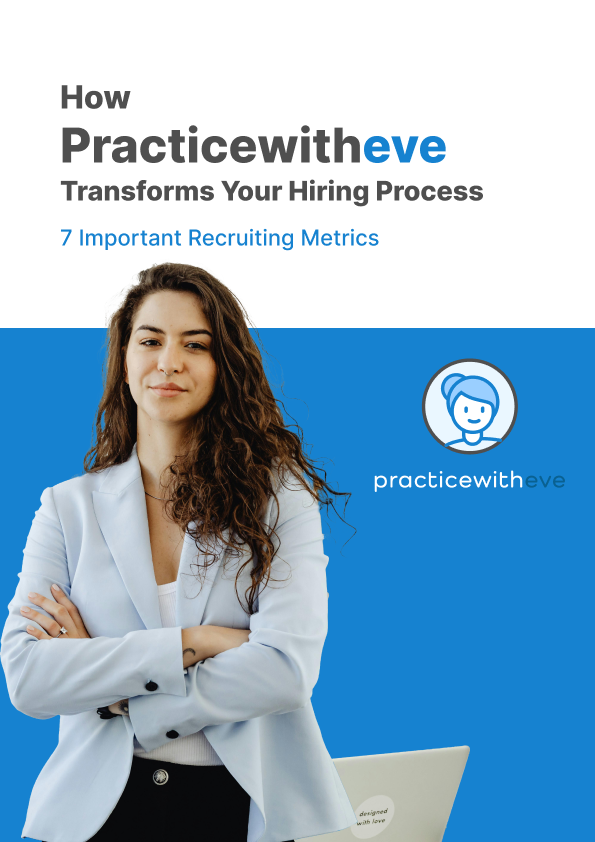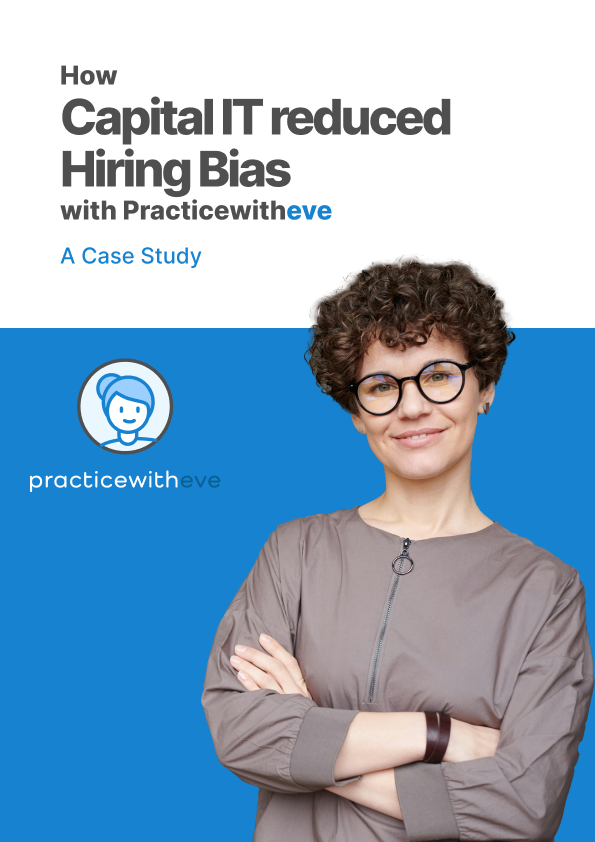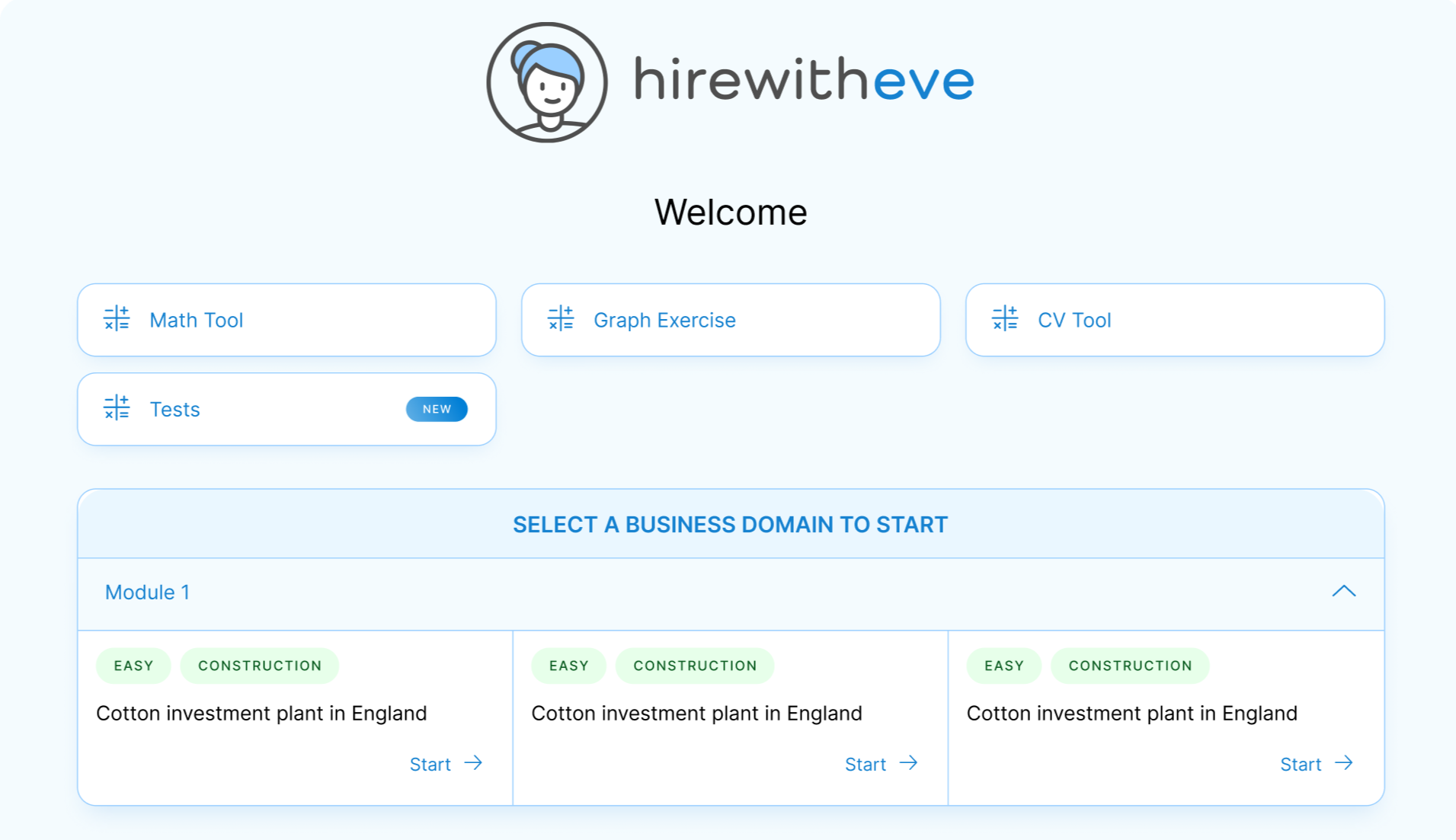Modern Recruitment Trends and Strategies for HR Managers

Share
In today's competitive job market, outdated hiring practices often fall short of identifying and attracting top talent. These traditional methods can overlook the full spectrum of candidates' skills, leading to biased, slow recruitment processes. Consequently, companies may find themselves with less diverse, innovative, and adaptable workforces.
To address these issues, adopting emerging recruitment trends that focus on skills, leverage technology, and cater to candidate's preferences is crucial. This comprehensive guide explores these trends and highlights how they can help you attract and retain the best talent.
Table of contents
The Problem with Outdated Hiring Practices
The Importance of Modern Recruitment Trends
Recruiting Trends Steering the Future of Hiring
How HirewithEve Supports Emerging Recruitment Trends
FAQs
Conclusion
The Problem with Outdated Hiring Practices
Traditional recruitment methods, such as relying heavily on resumes and standardized interviews, have significant limitations. These practices often:
Overlook the candidate's full range of skills and potential.
Introduce biases that can skew hiring decisions.
Slow down the recruitment process, making it difficult to secure top talent quickly.
These issues can lead to a workforce that lacks diversity and adaptability, hindering a company's ability to innovate and respond to changing market demands.
The Importance of Modern Recruitment Trends
Modern recruitment trends address these challenges by promoting innovation, inclusivity, adaptability, and efficiency. By focusing on skills and leveraging advanced technologies, companies can create a more effective and fair hiring process.
Recruiting Trends Steering the Future of Hiring
Automation and AI
Automation and AI are transforming the recruitment landscape by:
Improving Hiring Accuracy: AI-powered applicant tracking systems (ATS) can assess candidate's skills more accurately by interpreting context rather than just relying on keywords.
Reducing Bias: AI can help eliminate human biases by focusing on objective criteria and data-driven insights.
Streamlining Recruitment Processes: Automation reduces manual, repetitive tasks, allowing HR professionals to focus on more strategic aspects of recruitment.
For instance, AI chatbots can improve candidate communication by answering common questions and providing status updates, reducing the likelihood of candidates abandoning the application process.
How to Implement Automation and AI:
Prescreen candidates with skills tests.
Use AI-driven ATS to match candidate's skills with job requirements.
Employ conversational AI chatbots for better candidate engagement.
Skills-Based Hiring
Skills-based hiring is a crucial trend that emphasizes evaluating candidates based on their skills rather than traditional metrics like resumes and educational qualifications. This approach:
Increases the Quality of New Hires: Skills assessments provide a clear picture of a candidate's abilities, ensuring a better fit for the role.
Minimizes Recruitment Bias: Objective skills tests help eliminate biases that can arise from subjective evaluations.
Reduces Hiring Costs: By focusing on skills, companies can avoid costly mis-hires and reduce time-to-hire.
Implementing Skills-Based Hiring:
Use talent assessments tailored to the specific skills required for the role.
Combine multiple skills tests for a comprehensive evaluation.
Analyze assessment results to make data-driven hiring decisions.
Flexible and Remote Work
The demand for flexible and remote work options has grown significantly, especially among millennial and Gen Z workers. Adopting flexible work policies can:
Attract Top Talent: Flexible work options show that your company values work-life balance and innovation.
Support Employee Wellbeing: Flexible schedules and remote work can improve mental health and productivity.
Establishing Flexible Work Policies:
Offer various flexible work options, such as remote work, compressed workweeks, and unlimited vacation days.
Implement digital tools for communication and collaboration.
Set clear expectations and focus on outcomes rather than hours worked.
Data-Driven Recruitment
Data-driven recruitment involves using analytics and insights to optimize hiring decisions and strategies. This trend:
Enhances Decision-Making: Data provides actionable insights that improve candidate matching and hiring outcomes.
Reduces Bias: Objective data helps eliminate biases, promoting a more diverse and inclusive workplace.
How to Leverage Data-Driven Recruitment:
Track key recruitment metrics, such as time-to-hire and candidate sources.
Use talent assessments to evaluate and compare candidates quantitatively.
Employ predictive analytics to forecast hiring needs and trends.
Diversity, Equity, and Inclusion (DEI)
Promoting DEI is essential for creating a workplace that fosters innovation and creativity. DEI initiatives:
Drive Innovation: Diverse teams bring varied perspectives and ideas.
Enhance Company Culture: A commitment to DEI creates a more inclusive and supportive work environment.
Implementing DEI Strategies:
Use blind recruitment processes to minimize bias.
Develop diverse hiring panels to bring multiple perspectives.
Set measurable DEI goals and track progress.
Internal Hiring and Upskilling
Focusing on internal hiring and upskilling can be more effective than external recruitment. This approach:
Builds Workforce Capability: Upskilling develops employees' hard and soft skills.
Improves Employee Retention: Providing career development opportunities increases employee loyalty and engagement.
Strategies for Internal Hiring and Upskilling:
Identify skill gaps and provide relevant training programs.
Promote internal mobility by offering lateral and vertical growth opportunities.
Foster a culture of continuous learning and development.
Enhancing Candidate Experience
Creating a positive candidate experience is crucial for attracting top talent. Key aspects include:
Responsiveness: Keep candidates informed throughout the recruitment process.
Engagement: Treat candidates like customers, providing a seamless and enjoyable experience.
Improving Candidate Experience:
Streamline the application process to make it quick and easy.
Provide regular updates and feedback.
Be flexible with interview scheduling and offer a transparent hiring process.
Social Recruiting
Social recruiting leverages social media platforms to attract and engage potential candidates. This trend:
Expands Reach: Social media allows companies to connect with a broader audience.
Reinforces Brand Identity: Platforms like LinkedIn and Instagram can showcase company culture and values.
Implementing Social Recruiting:
Create engaging content that highlights your company's work environment and values.
Use targeted social media campaigns to reach specific candidate demographics.
Encourage employees to share job openings and company updates on their social networks.
Wellness and Mental Health
Supporting employee's wellness and mental health is essential for maintaining a productive and engaged workforce. Initiatives include:
Flexible Work Options: Offering flexibility can improve work-life balance and reduce stress.
Mental Health Resources: Provide access to counseling services and mental health programs.
Promoting Employee Wellness:
Encourage regular breaks and healthy lifestyle choices.
Foster an open culture where employees feel comfortable discussing mental health.
Organize wellness programs and activities.
Employer Branding
A strong employer brand attracts top talent by showcasing your company's values, culture, and opportunities. Effective employer branding:
Attracts Qualified Candidates: A positive brand reputation makes your company more appealing to job seekers.
Influences Candidate Decisions: Clear messaging about your company’s values and culture can sway a candidate's choices.
Building a Strong Employer Brand:
Highlight your company's unique strengths and values in all recruitment materials.
Use various channels, such as social media and company blogs, to share employee stories and company achievements.
Maintain a consistent and authentic message across all platforms.
How HirewithEve Supports Emerging Recruitment Trends
HirewithEve is at the forefront of modern recruitment solutions, offering tools and features that align with current trends:
Comprehensive Skills Assessments: Evaluate candidates based on their skills, reducing bias and improving hiring accuracy.
AI-Powered ATS: Utilize AI to enhance candidate matching and streamline recruitment processes.
Flexible Integration: Easily integrate with other HR tools and platforms to create a seamless recruitment workflow.
Data-Driven Insights: Leverage analytics to optimize recruitment strategies and make informed decisions.
Customizable Solutions: Tailor assessments and recruitment processes to fit your specific needs and goals.
By adopting HirewithEve, talent acquisition specialists and HR managers can stay ahead of the curve and ensure their hiring practices are effective, fair, and efficient.
FAQs
Common Recruitment Methods
What are the most frequently used methods of recruiting?
Employee referrals
Online job postings
Social media campaigns
Recruitment agencies
Company career websites
Industry events and job fairs
Professional networks and forums
Internal job postings
The Changing Landscape of Recruiting
How is recruiting changing?
Increasing automation and AI integration.
Shift towards skills-based hiring.
Focus on DEI initiatives.
Adoption of flexible and remote work policies.
Emphasis on creating a positive candidate experience.
Challenges in Modern Recruitment
Why is recruiting so hard now?
A competitive job market with high candidate expectations.
Need for more diverse and inclusive hiring practices.
Rapid technological advancements.
Demand for flexible work arrangements.
Complexity in creating an engaging candidate experience.
The Future of Talent Acquisition
What is next in talent acquisition?
More personalized, candidate-centric recruitment processes.
Greater use of AI and data analytics.
Continued focus on skills-based hiring and DEI initiatives.
Increased emphasis on employer branding and candidate experience.
Conclusion
The recruitment landscape is evolving rapidly, driven by emerging trends that focus on innovation, inclusivity, adaptability, and efficiency. By embracing these trends, companies can attract and retain top talent, creating a more diverse and capable workforce.
HirewithEve offers the tools and solutions needed to stay ahead in this dynamic environment. By leveraging skills assessments, AI-powered ATS, and data-driven insights, HirewithEve helps companies optimize their recruitment processes and achieve better hiring outcomes.
Stay ahead of the curve and ensure your recruitment practices are modern, effective, and aligned with the latest trends by choosing HirewithEve.
The best advice in pre- employment testing, in your inbox.
No spam. Unsubscribe at any time.
TARGET YOUR TALENT
Unlock tailored solutions for your recruitment and hiring needs with Eve Platform's extensive case study library.
Free Resources

Transforming Hiring: 7 Key Recruiting Metrics
Enhancing recruitment processes with data-driven insights for better hiring outcomes.

Reducing Hiring Bias with Practicewitheve.
Utilizing Practicewitheve to combat bias and streamline recruitment processes effectively.

Hiring Detail-Oriented Candidates
PracticewithEve enhances hiring by accurately assessing candidate's attention to detail-oriented.








